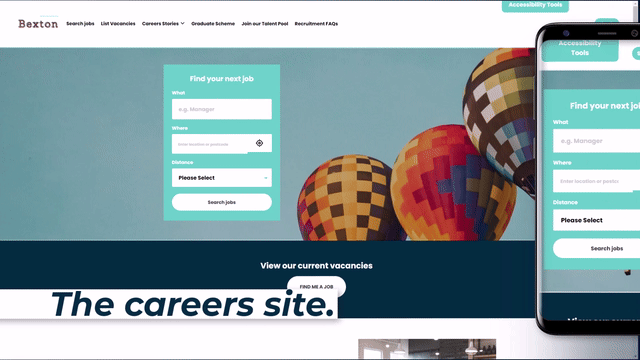In this blog, we'll look at different strategies to attract quality candidates instead of a flood of the good, the bad and the ugly.
Only in 2021 and 2022, the hot topic on most organisations' minds was a shortage of candidates. With many people choosing different career paths following the pandemic, candidate shortage was a real problem. From our own Talent Intelligence research, the average number of applications in this period was four per vacancy and an average time to hire of 76 days.
However, from 2023 onwards, the labour market has very much recovered with the scarcity of applications easing, but finding good quality candidates remains a challenge.
Tip 1 - create effective shortlisting questions
One of the most effective ways to attract quality over quantity is using effective shortlisting questions (or killer questions as they're sometimes known). They should be designed to assess the specific skills, experience and qualifications essential for the job they're applying for. By asking targeted questions, candidates can be quickly identified who meet (and do not) your criteria. Those who fail the shortlisting questions can be automatically filtered out - and if you're using an ATS like Jobtrain, personalised yet automated rejection emails can be sent too. By doing this, you're always going to deliver a stellar experience and protect your brand.
Another advantage of utilising shortlisting questions is their ability to pinpoint candidates who have a genuine interest in the position. If you're asking questions that require thoughtful responses, you can gauge a candidate's level of enthusiasm and passion for the role, a valuable indicator of their commitment.
How to create shortlisting questions: Strike a balance between being thorough and concise. Avoid asking too many questions that can be time-consuming for candidates to answer whilst ensuring enough information is gathered to make an informed decision and screen out unsuitable candidates.

Tip 2 - Include salary and benefits information in job adverts
Providing salary information helps candidates screen themselves in or out of the process. After all, salary is often a key consideration for candidates, so it's important to be clear about what's on offer. It can also help candidates decide if the job is right for them before they've even considered applying. Without a salary on display, it might put some candidates off applying altogether - these candidates may be the stars you're looking for.
Not including salary details disproportionately affects women and minority groups. According to data from XpertHR: "Companies with transparent job adverts reported a 9% gender pay gap, as opposed to the 19% pay gap amongst those without transparency in their job adverts." Reed.co.uk data found that job adverts which included salary details saw over a 27% increase in applications from diverse candidates.
How to fix it: Clearly state the salary range or the specific salary to help candidates understand if it aligns with their expectations. It can also save time later in the process should they be offered the job. Highlight additional benefits and perks too such as healthcare benefits, flexible working hours or professional development opportunities.
Tip 3 - Make a star of your company culture and benefits
Your company's culture (and whether there is any published content around this on your careers site) can be the difference between a star candidate choosing to apply or not. Candidates want to work for an organisation that aligns with their values and provides a positive work environment. Show off your personality too - here's an example of what our content looks like, showing off our fun side whilst also providing informative content:
In your job adverts, across your careers site and during the recruitment process, emphasise your organisation's culture and values. Share information about your organisation's mission, vision and core beliefs. Highlight any unique aspects of workplace culture, such as a collaborative team environment, opportunities for growth and development, or a commitment to work-life balance.
Remember - be authentic! Candidates can spot when an organisation is just paying lip service to a culture tagline. It must be a genuine representation of your organisation and avoids exaggerating or overselling your organisation.
Tip 4 - Optimise your careers website for candidates to self-select
To attract quality over quantity of candidates, it's important to optimise your careers website to enable candidates to be better informed for self-selection. Like we've covered above to add to job adverts, much of the content can also live on your careers website too. The careers website should be easily accessible from your corporate one and user-friendly too.

Alongside showcasing job openings, your careers pages can include anything that supports informing potential candidates. Highlight your organisation's values, culture and benefits and provide an insight into what it's like to be a part of your team.
What to include: Use videos featuring interviews with staff members to offer a glimpse into the work environment. For roles that are frequently advertised, such as a support worker, consider creating 'day-in-the-life' videos to give potential candidates a realistic preview. This approach helps candidates determine if the role aligns with their expectations, ensuring that you only attract applicants who are well-informed about the job requirements.
Testimonials or success stories from current employees are also a great way to showcase the positive experiences they have had with your company.
Tip 5 - Implement targeted recruitment strategies
Implementing targeted recruitment strategies can significantly improve your chances of hiring quality candidates. Instead of relying solely on generic job boards, consider implementing more targeted approaches.
Identify ad platforms or channels where your target candidates are most likely to be active. This could include industry-specific forums, professional networking events or online communities.
At Jobtrain, we're proud to provide our clients with a Job Board Marketplace in our ATS. For those niche or hard-to-fill roles, it can search for the most suitable advertising platform for that particular job - no complicated job board contracts are needed either. This allows organisations to try new strategies and new job boards without being tied into long-term and expensive commitments.
Employee referrals are also worthwhile considering as part of your recruitment strategy. Referral hires are 40% more likely to be retained after one year than non-referral hires, so it should be a strategy to consider.
Watch - "Talent referral programs reimagined" a webinar where we chatted with employer brand expert, Dave Walstow from Creed Comms, who offered invaluable advice to organisations exploring employee referral programs.
We hope this article has proved valuable and gives you the tools to explore new options on how to attract quality over quantity.